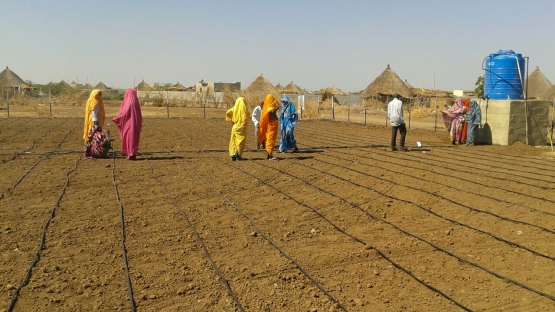Monitoring how atoms behave in soil, water and fertilizer is helping small-scale farmers in the arid Kassala region of Sudan to more efficiently cope with a changing climate. After a successful pilot project supported by the IAEA, in partnership with the Food and Agriculture Organization of the United Nations (FAO), thousands of farmers in the region are now benefiting from a combination of drip irrigation and isotopic techniques to more effectively grow vegetables.
“When water runs low and soil goes dry, a farmer does not just risk losing an income, it also means families may not have enough food to eat,” said Lee Heng, Head of the Soil and Water Management and Crop Nutrition Section of the Joint FAO/IAEA Division of Nuclear Techniques in Food and Agriculture. “So understanding what’s happening in the soil, and when and how much water is needed can make a big difference.”
Agriculture is the primary source of income and livelihood for up to 80% of the population in Sudan, with onions, jute marrow, rocket, and purslane being staple crops in the Kassala region. Most of the 21 million hectares of agricultural land relies on rainfall, while only around 11% is irrigated. This means that unpredictable changes in rainfall, fluctuating temperatures and water scarcity, as a result of climate change, can be serious obstacles for many farmers in the country, including women who also play an important role in farming in Sudan.
“Both men and women work in the farming sector in Sudan. Women do a lot of the hard work, with planting, maintaining and harvesting of crops. This project helps empower them with the knowledge to use irrigation and fertilizer applications to improve their crops and reduce how much labour they need to put in,” said Lee Heng. According to the United Nations Women organization, a growing body of evidence shows that women's economic empowerment significantly contributes to sustainable development and poverty eradication, as women re-invest most of their income in education, nutrition and health of their families.
Women farmers, along with men, played an active part in this project by the Joint FAO/IAEA Division, in cooperation with the Horticulture Research Centre Farm of the Agricultural Research Corporation (ARC). They were trained in how to use the drip irrigation systems to efficiently water crops and when and how much fertilizer to apply to help plants flourish.





